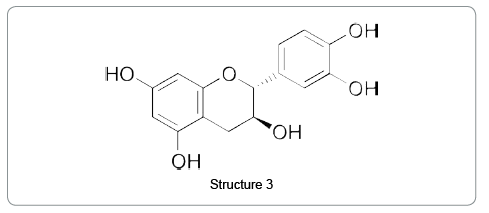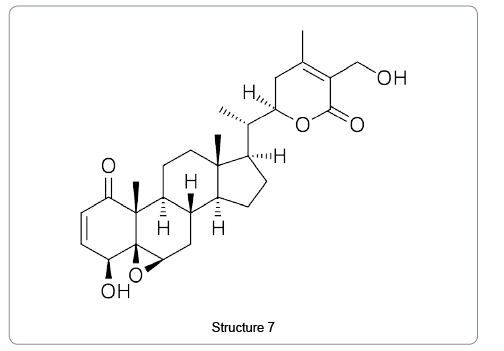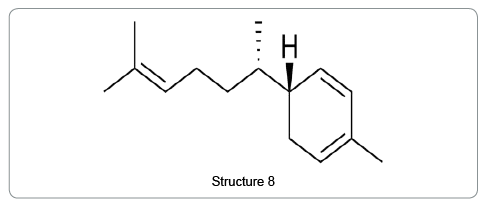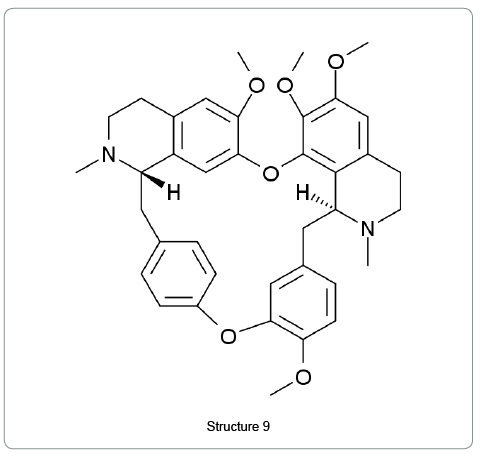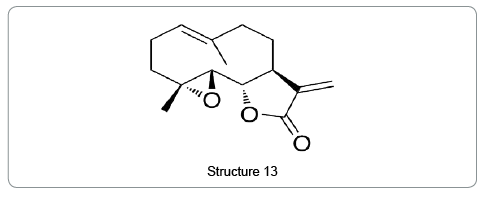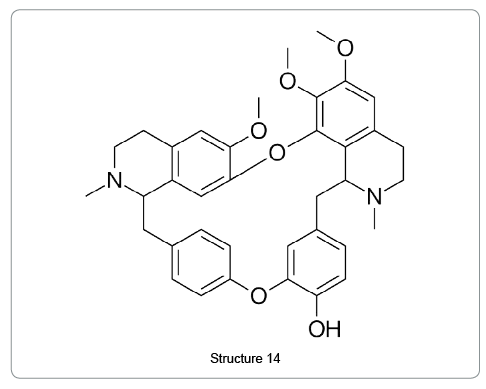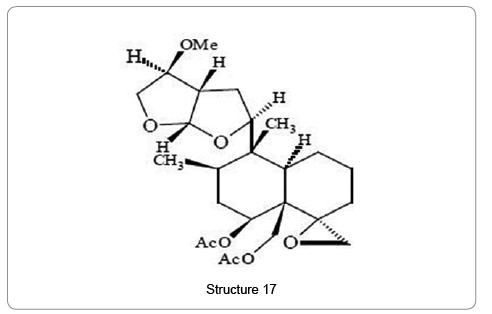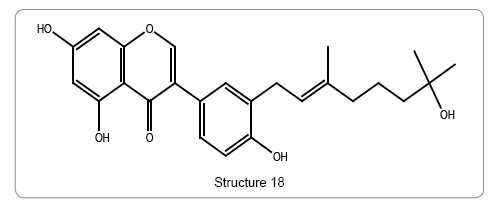Medicinal Plants: Source for Immunosuppressive Agents
Received: 27-Sep-2018 / Accepted Date: 22-Oct-2018 / Published Date: 31-Oct-2018
Keywords: Medicinal plants; Auto-immune diseases; Rheumatoid arthritis; Immune system; Immuno-suppressive agents
Abbreviations
CB: Cannabinoid; CTL: Clerodendron trichotomum Tunberg Leaves; COX: Cyclooxygenase; IL: Inter Leukin; LOX: Lipoxygenase; NF- Necrosis Factor; PG: Pprostaglandin; TNF: Tissue Necrosis Factor; TwHF: Tripterygium wilfordii hook
Introduction
Human body immune system plays important role to protect the body from the attack of pathogenic microorganisms. Immune system is categorized into two types such as cell mediated immunity and humoral or antibody mediated immunity. Similarly, immunosuppressive activity refers to the reduction in the activation of the immunity system [1]. The imbalance in immune system leads to a various diseases in humanbeings. So, the immune-suppressants are applied to monitor the symptoms of allergic, autoimmune and organ transplantation related disorders. Autoimmune diseases includes psoriasis, celiac disease, rheumatoid arthritis, myasthenia gravis, systemic lupus erythematosus, Crohn's disease, and ulcerative colitis whereas organ transplantation involves body organs such as bone marrow, heart, kidney, lungs and liver [2]. The activity of medicinal plants as immunosuppressive agents is due to their inhibitory cellular and humoral immune responses on immune system [3].
Medicinal Plants as Immunosuppressive Agents
Cannabis suppresses the hyperactivity of immune system by acting on cannabinoid receptors such as cannabinoid receptor 1 (CB1) and cannabinoid receptor 2 (CB2). CB1 receptors are mostly present in the brain whereas CB2 receptors are abundant in immune cells. So, the cannabinoids are used for the treatment of cancer and inflammatory disorders [4] Structure 1.
Brasilicardin-A is isolated from the cultured broth of Nocardia brasiliensis IFM0406 and exhibit immunosuppressive activity. It contains the active chemical constituents such as amino acid and perhydro-phenanthrene moiety with a sugar rhamnose [5] Structure 2.
Green tea is a product of the dried leaves of Camellia sinensis of family Theaceae and is used for treatment of autoimmune arthritis. The polyphenolic compound (catechin) present in green tea possesses antiinflammatory properties [6] Structure 3.
PArtemisia annua has been extensively used for the treatment of autoimmune diseases such as systemic lupus erythematoses and rheumatoid arthritis. Artemesinin as well as its derivatives artesunate and artemether possess immune-modulatory effect [7] Structure 4.
Sarsaparilla plant contains steroids such as sarsasapogenin, smilagenin, sitosterol, stigmasterol and saponins like sarsasaponin, smilasaponin. Sarsaparilla is beneficial for the treatment arthritis due to its ability to inhibit TNF-α induced NFk-β activation [8] Structure 5.
Turmeric (Curcuma longa) of Zingiberace family is widely utilized for treatment of infections and inflammatory diseases. Curcumin is a yellow colored pigment which is extracted from the rhizome of Curcuma longa. This constituent of Curcuma regulates immune system by cellular and humoral mediated immunity [9] Structure 6.
Ashwagandha (Withania somnifera) is widely used in the treatment of psoriasis, arthritis and rheumatism. The chemical constituents present in Ashwagandha are alkaloids (isopelletierineanaferine), steroidal lactones (withanolides, withaferins), saponins (sitoindoside VII and VIII) and withanolides. These constituents produce immunosuppressive action on B and T cell activity in hyper-immune states [10] Structure 7.
Ginger (Zingiber officinale) is used to decrease pain in arthritis. The chemical constituent zingiberene is mainly responsible to reduce pain and inflammation by inhibiting cyclooxygenase (COX) and lipoxygenase (LOX) pathways [11] Structure 8.
Stephania tetrandra is used for the treatment of autoimmune disease and rheumatic arthritis. Tetrandrine is the active constituent which produces immunemodulating effects by inhibiting TNF-α [12] Structure 9.
Tripterygium wilfordii is widely known to treat autoimmune diseases such as systemic lupus erythematosus and rheumatoid arthritis. Its active constituent triptolide exhibits anti-inflammatory and immunosuppressive activities by producing inhibitory effect on T-cells [13] Structure 10.
Salvia miltiorrhiza of Labiatae family is recognized for the treatment of immunological disorders. The chief active constituent of Salvia miltiorrhiza is Tanshione IIA (TSN). TSN produces its action by reducing inflammatory cytokines such as IL-2, IL-4 and TNF-α [14] Structure 11.
Liquorice (Glycyrrhiza glabra) belongs to Fabaceae family which exhibits immune-modulatory properties. Glycyrrhizin and glycyhrritinic acid are the active constituents which have antiinflammatory effects by inhibition of calcineurin activity and T-cell proliferation [15] Structure 12.
Parthenolide is a major sesquiterpene lactone present in extracts of Tanacetum parthenium of Asteraceae family and used for the treatment for rheumatoid arthritis. It inhibits the release of pro-inflammatory mediators such as nitric oxide, prostaglandin (PG) E2 and TNF-α [16] Structure 13.
Berberis vulgaris of Berberidaceae family has immunosuppressive action. Berbamine is the active constituent which has selective inhibitory effect on STAT-4 expression and production of IFN-γ in cells [17,18] Structure 14.
Andrographis paniculata of family Acanthaceae is recommended for the relief of rheumatoid arthritis and autoimmune disease. The main constituent Andrographis paniculata is andrographolide. It produces inhibitory effects on NF-κB trans-activation activity [19,20] Structure 15.
Alliin is chemically a sulfoxide which is the natural constituent of garlic (Allium sativum). It is a derivative of the amino acid cysteine. Alliin is capable of suppressing LPS inflammatory signals by generating an anti-inflammatory gene expression and prevented the increase in expression of pro-inflammatory cytokines IL-6 and MCP-1[21] Structure 16.
The active constituent Clerodinin-A is isolated from Clerodendron trichotomum Tunberg Leaves (CTL) which inhibits the pro-inflammatory gene expression in LPS-stimulated RAW 264.7 macrophages by suppressing NF-kappa-B activation [22] Structure 17.
The geranylated flavonoids (5,7,4'-trihydroxy-3'-[7-hydroxy- 3,7-dimethyl-2(E)-octenyl]isoflavone) isolated from the roots of Campylotropis hirtella exhibits immunosuppressive activities [23] Structure 18.
Triptolide is an active ingredient present in the Chinese herb Tripterygium wilfordii hook (TwHF). Chemically, it is a diterpene triepoxide and act as potent immunosuppressant and anti-inflammatory agent [24] Structure 19.
Results
Various experiments are carried out to find out the immunosuppressive effects of medicinal plants growing in different parts of the world [25]. The following plants are studied for their immunosuppressive effects which are presented in Table 1.
| Name of Plants | Family | Immunosuppressive effects |
|---|---|---|
| Argyrolobium roseum | Papilionaceae | Decreased T cells and B cells numbers |
| Andrographis paniculata | Acanthaceae | Relief of rheumatoid arthritis symptoms |
| Bupleurum falcatum | Umbelliferae | Inhibits the proliferation and activation of T cells |
| Clerodendron trichotomum | Verbenaceae | Inhibits arachidonic acid release and prostaglandin E2 production |
| Campylotropis hirtella | Leguminosa | Inhibits mitogen induced splenocyte proliferation |
| Dracocephalum kotschyi | Labiatae | Inhibits lymphocyte proliferation |
| Glycyrrhiza glabra | Fabaceae | Inhibition of calcineurin activity and T cell proliferation |
| Periploca sepium | Asclepiadaceae | Suppresses IL-17 production |
| Salvia mirzayanii | Labiatae | Inhibits IL-2 production |
Table 1: List of Medicinal plants as immunosuppressive agents.
Conclusion
Various medicinal plants have been used for the treatment of different immunological disorders. There are extensive studies carried out for determining the mode of action plant constituents as immunosuppressive agents. So, the pharmacological properties lend themselves to further confirmatory testing and expanded to other immuno-suppresive uses. The active ingredients present in various medicinal plants used as immunosuppressive agents includes Withania somnifera, Glycyrrhiza glabra, Andrographis paniculata, Salvia miltiorrhiza, Zingiber officinale, Berberis vulgaris, Curcuma longa etc. These plants have been extensively studied for their active constituents and their mechanism of action towards immunosuppressant activities.
Conflict of Interest
We declare that we have no conflict of interest.
References
- Abbas AK, Lichtman AH, Pillai S (2012) Cellular and Molecular Immunology. 7th Ed., Saunders, ISBN 978-1-4377-1528-6.
- Hong JC, Kahan BD (2000) Immunosuppressive agents in organ transplantation: past, present, and future. Semin Nephrol 20: 108.
- Halloran PF (2004) Immunosuppressive drugs for kidney transplantation. N Engl J Med 351: 2715-2729.
- Venkatesh LH, Nagarkatti M, Prakash SN (2010) Cannabinoid receptor activation leads to massive mobilization of myeloid-derived suppressor cells with potent immunosuppressive properties. Eur J Immunol 40: 3358-3371.
- Takeo U, Yoko N, Watanabe A (2006) Brasilicardin A: Natural Immunosuppressant, Targets amino acid transport system. Chemistry & Biology 13: 1153-1160.
- Lorenzo JM, Munekata PES (2016) Phenolic compounds of green tea: Health benefits and technological application in food. Asian Pac J Trop Biomed 6: 709-719.
- Lifei H, Haochu H (2016) Immune Suppressive Properties of Artemisinin Family Drugs. Pharmacol Ther 166: 123-127.
- Cullingworth CJ (1906) A Note on the Therapeutic Value of Sarsaparilla in Syphilis. Br Med J 1: 791-2.
- Jurenka JS (2009) Anti-inflammatory properties of curcumin, a major constituent of Curcuma longa: A review of preclinical and clinical research. Altern Med Rev 14: 141-53.
- Vetvicka V, Vetvickova J (2011) Immune enhancing effects of WB365, a novel combination of Ashwagandha (Withania somnifera) and Maitake (Grifola frondosa) extracts. N Am J Med Sci 3: 320-324.
- Srivastava KC, Mustafa T (1989) Ginger (Zingiber-Officinale) and Rheumatic Disorders. Med Hypotheses 29: 25-28.
- Lai JH (2002) Immunomodulatory effects and mechanisms of plant alkaloid tetrandrine in autoimmune diseases. Acta Pharmacol Sin 23: 1093-1101.
- Wilasrusmee C, Siddiqui J, Bruch D, Wilasrusmee S, Kittur S, et al. (2002) In vitro immuno-modulatory effects of herbal products. Am Surg 68: 860-864
- Metalidis C, Kuypers DR (2011) Emerging Immunosuppressive Drugs in Kidney Transplantation. Curr Clin Pharmacol 6: 130-136.
- Regazzi MB, Alessiani M, Rinaldi M (2005) New Strategies in Immunosuppression. Transplant Proc 37: 2675-2678.
- Allison AC (2000) Immunosuppressive drugs: the first 50 years and a glance forward. Immunopharmacol 47: 63-83.
- Gabardi S, Martin ST, Roberts KL, Grafals M (2011) Induction immunosuppressive therapies in renal transplantation. Am J Health Syst Pharm 68(3): 211-218
- Setty AR, Sigal LH (2005) Herbal medications commonly used in the practice of rheumatology: mechanisms of action, efficacy, and side effects. Semin Arthritis Rheum 34: 773-784.
- Akbar S (2011) Andrographis paniculata: A review of pharmacological activities and clinical effects. Altern Med Rev 16: 66-77.
- Burgos RA, Hancke JL, Bertoglio JC, Aguirre V, Arriagada S, et al. (2009) Efficacy of an Andrographis paniculata composition for the relief of rheumatoid arthritis symptoms: A prospective randomized placebocontrolled trial. Clin Rheumatol 28: 931-946.
- Hodge G, Hodge S, Han P (2002) Allium sativum (garlic) suppresses leukocyte inflammatory cytokine production in vitro: potential therapeutic use in the treatment of inflammatory bowel disease. Cytometry 48: 209-215.
- Park MA, Kim HJ (2007) Anti-inflammatory constituents isolated from Clerodendron trichotomum Tunberg Leaves (CTL) inhibits pro-inflammatory gene expression in LPS stimulated Raw 264.7 macrophages by suppressing NF-kappa-B activation. Arch Pharm Res 30: 755-760.
- Shou QY, Fu RZ, Tan Q, Shen ZW (2009) Geranylated flavonoids from the roots of Campylotropis hirtella and their immunosuppressive activities. J Agric Food Chem 57: 6712-6719.
- Samira Z, Reginald H (2016) Immunosuppressive, anti-inflammatory and anti-cancer properties of triptolide: A mini review. Avicenna J Phytomed 6: 149-164.
- Amirghofran Z (2010) Medicinal plants as immunosuppressive agents in traditional Iranian medicine. Iran J Immunol 7: 65-73.
Citation: Sahoo BM, Banik BK (2018) Medicinal Plants: Source for Immunosuppressive Agents. Immunol Curr Res 2: 106.
Copyright: © 2018 Sahoo BM, et al. This is an open-access article distributed under the terms of the Creative Commons Attribution License, which permits unrestricted use, distribution, and reproduction in any medium, provided the original author and source are credited.
Share This Article
Recommended Journals
Open Access Journals
Article Usage
- Total views: 20690
- [From(publication date): 0-2018 - Apr 01, 2025]
- Breakdown by view type
- HTML page views: 19435
- PDF downloads: 1255



